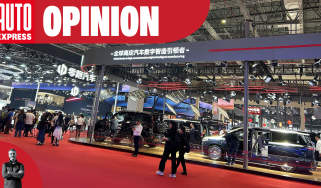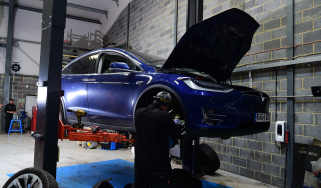Chinese EVs beat European rivals for battery fire safety
New rules mandate no fires or explosions for two hours after thermal runaway events

China is toughening up its electric car fire safety standards, with a new rule stating cars with battery defects that cause so-called ‘thermal runaways’ should not catch fire or explode for a period of at least two hours after the potentially disastrous process is initiated in a single battery cell.
Chinese car makers set down a marker for EV fire safety in 2021, with the first global standard that mandated a five-minute warning for occupants to escape before fire or explosion occurred, with no visible smoke allowed in the passenger compartment for the same five-minute period.
According to Dr James Edmondson, a spokesman for tech research firm IDTechEx, updates to Chinese standards due next year put them further ahead in the race to be the safest EV market.
“What is clear is that China's standards are moving much quicker with regard to thermal runaway in EVs than other regions that are still going through drafts, revisions and updates with no mandated standards in place,” he says, pointing to Europe’s focus on a new regulation expected to be implemented in 2027. This, he says, has more in common with China’s already out of date 2020 fire safety standard.
Edmondson reckons that while car makers globally have successfully adapted their battery platforms to meet earlier Chinese standards, the new two-hour delay until fire breaks out is “a huge curveball”.
“Preventing thermal runaway between cells is certainly possible and several material options exist,” he says, “but as always, there is a trade-off in performance and price for each battery design. This all comes at a time where reducing battery costs is paramount for future EV adoption.”
Although EV fires have proved to be much less common than some predicted, there have been a number of recalls of electric vehicles after faults were discovered in cells that posed a fire risk, while in other cases faults with the wiring harness have posed dangers.
IDTechX says China's EV market has become increasingly dominated by LFP chemistry, which makes adhering to challenging fire safety standards easier than with the higher energy-density NMC chemistries often used elsewhere.
Developments in fire-proofing materials are happening at speed to keep pace with the regulations, with aerogels, foams and ceramics among the technologies in demand, according to the firm’s latest reports.
“Changing the battery make-up and chemistries can also have a huge impact on improving the safety of a vehicle. The implementation of solid-state batteries has the potential to revolutionise safety,” the company says. “Solid-state batteries can also allow for a wider operation temperature range and can result in less heat being generated from an external heating failure than liquid electrolyte. Hot spots are less likely to occur due to the higher thermal conductivity of solid-state electrolytes and the improved thermal dissipation.”
Click here for our list of the safest electric cars...
Find a car with the experts





